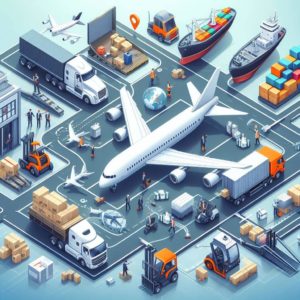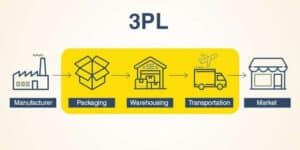POST PANDEMIC Effects On Canadian Logistics
Every area of our existence, especially the world economy, were affected by the COVID-19 epidemic, which brought the globe to a standstill. The logistics sector emerged as a key actor during the crisis among the numerous industries that saw its ripple effects. It was crucial in maintaining supply chains in the face of extraordinary difficulties by ensuring the seamless flow of necessities like food and medicine. But as the world slowly recovers from the pandemic, the logistics sector is forced to deal with fresh challenges and uncertainties. This essay investigates the various causes of the post-pandemic difficulties facing the sector and looks at how it is adjusting to the shifting environment.
Decreased Demand And Altered Consumer Behavior
The growth in online shopping and the requirement for shipping necessities around the world during the epidemic caused a substantial increase in demand for the logistics sector. Some demand segments may normalize when limitations loosen and economies stabilize, resulting in a decrease in the overall volume of commodities requiring transportation. Additionally, there have been substantial changes in consumer behavior, including a preference for internet purchasing and a stronger emphasis on sustainability and local production. These changes might force businesses to rethink their supply chain plans, which might result in less long-distance shipping and a preference for localized distribution.
Disruptions In the Supply Chain And Resilience
The pandemic revealed weaknesses in the world’s supply chains and the dangers of relying too heavily on particular regions or providers. Many businesses have reviewed their supply chain arrangements as a result of delays and disturbances in the flow of goods and are looking for more resilient options. Companies may implement regionalized supply chains or look into multi-sourcing possibilities in their drive for resilience to lessen potential interruptions. As a result, the supply chain industry may see a change towards more flexible and adaptable supply networks and a redistribution of trade flows.
Cost and Labor Issues
The workforce was severely impacted by the pandemic in a number of different areas, and the logistics industry was no exception. Logistics companies experienced tremendous stress during the crisis as a result of labor shortages, stricter health and safety regulations, and rising labour prices. These labor-related difficulties could continue beyond the pandemic, which could have an impact on the performance and cost-effectiveness of logistical operations. The industry may use automation and other technical remedies to address these problems in an effort to optimise resource use and streamline procedures.
Logistics Technology Advancements
The logistics sector has expedited the implementation of technology and digitalization in response to the pandemic’s problems. Efficiency gains, cost savings, and increased supply chain visibility have all been made possible by automation, artificial intelligence, and data analytics. Beyond the epidemic, it is anticipated that these technological developments will keep revolutionising the sector and altering how things are delivered, tracked, and moved. While this push for technological innovation might increase the competitiveness of the logistics industry, it also has the potential to result in job displacement as mundane jobs are automated.







